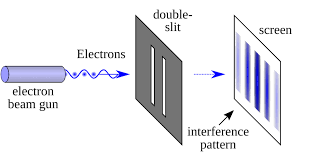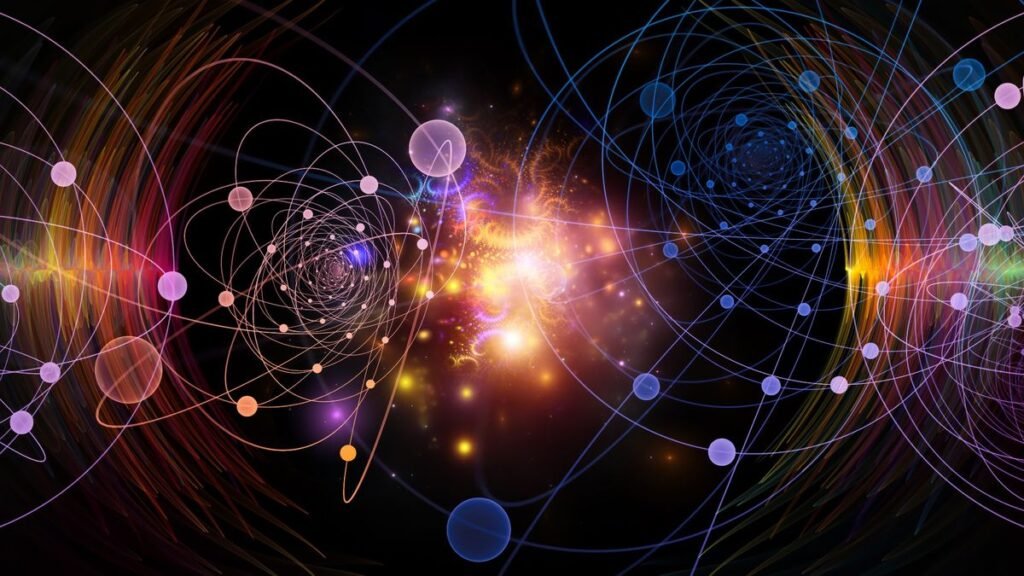Introduction
Quantum mechanics is one of the most fascinating and perplexing branches of physics. Unlike classical physics, which governs our everyday experiences, quantum mechanics delves into the behavior of particles at the atomic and subatomic levels, where the rules of the game are entirely different. The concepts introduced by quantum mechanics are so strange that they challenge our very understanding of reality.

What is Quantum Mechanics?
At its core, quantum mechanics is the study of how particles such as electrons, protons, and photons behave on the tiniest scales. Unlike classical physics, which describes objects with definitive properties like position and velocity, quantum mechanics deals with probabilities and uncertainties.
One of the most famous principles in quantum mechanics is the Heisenberg Uncertainty Principle. It states that you can never precisely know both the position and momentum of a particle at the same time. The more accurately you know one, the less accurately you can know the other. This isn’t just a limitation of our measurement tools; it’s a fundamental property of the universe.

The Dual Nature of Light and Matter
One of the most mind-bending concepts in quantum mechanics is wave-particle duality. Light, which we typically think of as a wave, can also behave like a particle. Similarly, particles such as electrons can exhibit wave-like properties. This dual nature was famously demonstrated in the Double-Slit Experiment.
In this experiment, when light (or electrons) passes through two slits, it creates an interference pattern on a screen, much like waves on water. However, when observed directly, the particles seem to pass through one slit or the other like tiny bullets, and the wave-like interference pattern disappears. This suggests that particles exist in a state of probability, or superposition until they are observed.

Schrödinger’s Cat: The Paradox of Superposition
To illustrate the oddities of quantum mechanics, physicist Erwin Schrödinger proposed a thought experiment known as Schrödinger’s Cat. Imagine a cat in a sealed box with a radioactive atom, a Geiger counter, and a vial of poison. If the Geiger counter detects radiation (because the atom decays), it breaks the vial and kills the cat. According to quantum mechanics, until you open the box and observe, the cat is simultaneously alive and dead, existing in a superposition of states.
This thought experiment highlights the strange implications of quantum mechanics, where particles can exist in multiple states simultaneously, and reality seems to depend on observation.

Quantum Entanglement: Spooky Action at a Distance
Another perplexing concept is quantum entanglement. When two particles become entangled, the state of one particle is instantly connected to the state of the other, no matter how far apart they are. Albert Einstein famously referred to this as “spooky action at a distance,” because it seems to violate the principle that nothing can travel faster than the speed of light.
However, experiments have shown that entanglement is real, and it plays a crucial role in quantum computing and other emerging technologies.

Why Does Quantum Mechanics Matter?
Quantum mechanics isn’t just a theoretical curiosity; it has practical applications that affect our daily lives. Many modern technologies, such as semiconductors, lasers, and even MRI machines, rely on principles of quantum mechanics. Moreover, the ongoing development of quantum computers—which leverage quantum superposition and entanglement—promises to revolutionize fields like cryptography, materials science, and artificial intelligence.

Conclusion
Quantum mechanics challenges our intuitive understanding of the universe, revealing a world where particles can be in two places simultaneously, where outcomes are probabilistic rather than deterministic, and where entangled particles are mysteriously connected across vast distances. Though it might seem strange and counterintuitive, quantum mechanics has become one of the most successful and accurate theories in physics, providing profound insights into the nature of reality.
As researchers continue exploring the quantum realm, we will likely uncover even more astonishing phenomena that could reshape our understanding of the universe and drive future technological advancements.

